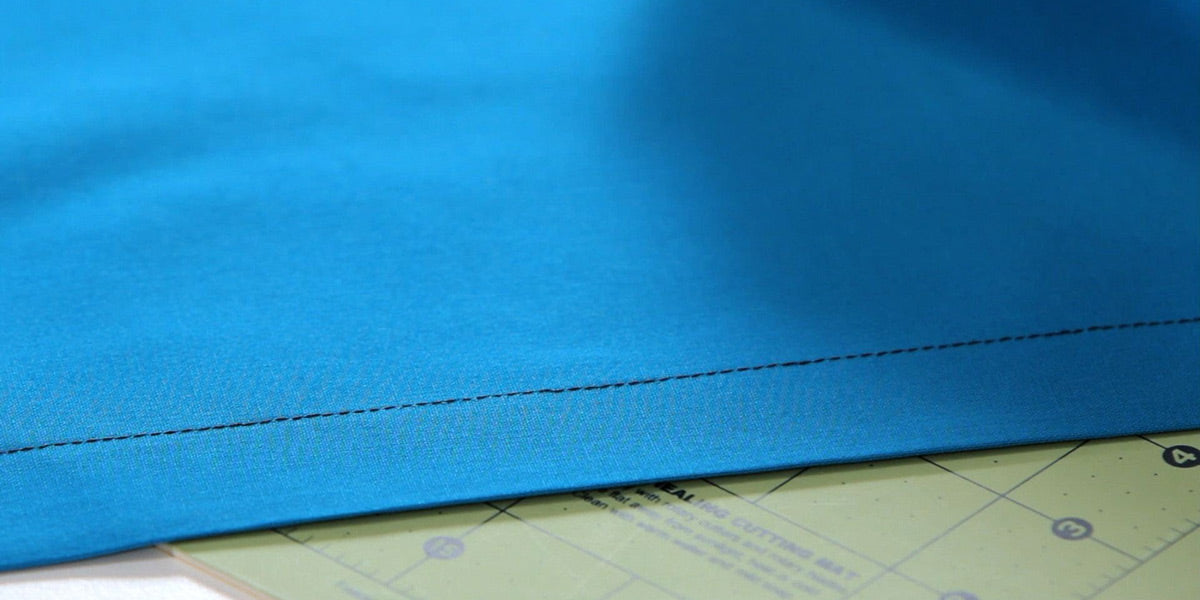Your Cart is Empty
Free Shipping On All Orders In January - No Coupon Code Necessary
Free Shipping On All Orders In January - No Coupon Code Necessary
Free Shipping On All Orders In January - No Coupon Code Necessary
Free Shipping On All Orders In January - No Coupon Code Necessary

October 16, 2017 3 min read
Hems are a real problem for sewers. They can be so scary to do! You can create perfect garments, but when the moment comes to sew the hem, you get into trouble. Hems are even trickier on fussy fabrics or bias cuts. Well, you no longer need to consider hems as your main enemy, as we’ll show you seven tips that will help you achieve even hems on your garments.
Most patterns have shorten or lengthen lines, and you need to find them on your pattern. In case you don’t make a muslin, you can pin-fit the tissue paper pattern and hold it up to check whether the hem lengths are in the appropriate area. Make sure you adjust before you cut.
Every sewer pays attention to the grainline on the pattern, but the horizontal balance line is also very important. The horizontal balance line is perpendicular to the grain line and it is required that this line stays at the same level and parallel to the floor the entire way around your body.
In case you make a muslin, you are recommended to mark the horizontal line on the fabric. When you do this, you will be able to see where this line tilts up or down, so you will easily know where you need more or less length on your garment. It is essential to adjust this, at it guarantees that the hem stays even. This way, it will be easier for you to hem the garment.
It is possible that you aren’t sure about the length of your garment from the beginning. You can change your mind through the process of creating a garment, so you can decide between a knee-length, midi, tea-length or maxi-length while still working on your sewing project. In case you might change your mind, you are recommended to use a 1” to 3” seam allowance, as it offers you plenty of room for a twist. It also allows you to pin an accurate and even hem without any inconvenience.
Most people have a bit of asymmetry in their body, such as a tilt in the spine, a high shoulder, or a hip lower than the other. These asymmetries are quite visible in hemlines. So what you need to do is get to know your body map and use it when you plan your sewing. If you have such an asymmetry, consider it when you plan your hem. For example, if you always have a pant leg that’s shorter than the other, you can plan your hem according to this problem. You will hence add more to that pant leg or you can pin the two pant legs at different lengths to make them fall evenly in the end.
The way you sew your seams may have an impact on the hem. So you need to ensure you sew the seams accurately, so you don’t determine unevenness at the hem edge.
It is challenging to pin up your own hem. You spend a lot of time pinning and checking in the mirror and then repeating the process until everything is right. Besides, it is nearly impossible to have a clear view of your back. To solve this problem, you can ask a friend to help you with this step. With the help you get from your friend, everything will work faster.
In case you need to mark the hem by yourself, you need to use a yardstick and a mirror. If you need to hem a skirt or dress, first pin the hem allowance up at the spot that you consider to be the right one. Then, keeping the yardstick straight up and down, you’ll note which inch mark links to the requested hem length. You will move the yardstick around your body, permanently holding it straight, and balance the garment hem to that specific mark on the yardstick. This will show you where the hem is too high or dips down.
After you do this, make some alterations with your pinning and then examine again. Examine both sides and the back in the mirror. If you want to make sure you see the back, you can even take a picture so you also examine it in the photo.
Even if there are some tiny differences, you shouldn’t worry about them, as the garments move with you, so no one will be able to observe these differences.